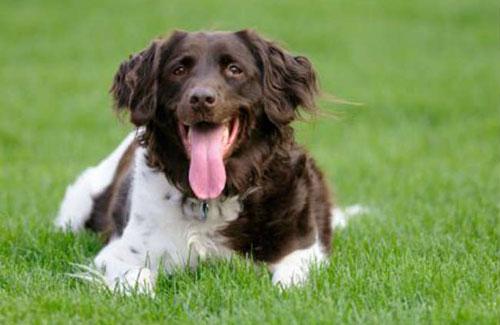|
  
- UID
- 15248
- 帖子
- 19457
- 积分
- 58820
- 学分
- 190302 个
- 金币
- 1000 个
- 性别
- 男
- 在线时间
- 20296 小时
      
|
双语:人类为什么能成为地球上最厉害的长跑健将
|
说起地球上最能跑的生物,你可能首先想到的是速度最快的猎豹。在百米赛跑中,飞人博尔特也跑不过一只猎豹。但在马拉松比赛中,就要另当别论了。事实上,论跑步耐力,人类远胜过狼、猎豹甚至是马。

Each year, a small town in Wales holds the Man Versus Horse Marathon. It's a 22-mile race between riders on horseback and runners. And, while horses often win, humans will sometimes prevail.
威尔士的一个小镇每年都会举办“人马长跑大赛”,由骑马者和跑步者共同参与,赛程约为35公里。虽然骑马者常常胜出,但人类有时也能获胜。
So what makes humans such endurance running superstars?
那么,人类为什么能成为长跑健将呢?
The secret weapon is our sweat. We have 2-4 million sweat glands all over our body, which means we can run and cool ourselves at the same time. Having no fur is also a huge plus.
我们的秘密武器是汗液。人类全身覆盖着200万至400万个汗腺——也就是说,我们能够一边跑步一边降温。另外,没有皮毛也是一大优势。
In contrast, dogs rely on panting to cool down, and other animals, like horses and camels, also sweat, but less effectively. As a result, they overheat faster and must slow down sooner.
相较而言,狗要靠喘气降温;马、骆驼等其他动物虽然也流汗,但降温效果不如人类。因此,它们的体温会更快过热,需要尽早减速。

The mechanics of our running stride also makes us particularly well-suited for endurance running. A human's running gait has two main phases: Aerial when both feet are off the ground and Stance when at least one foot touches the ground.
另外,人类的跑步步法也使我们格外适合长跑。人类跑步的步态有两步——腾空:双脚均离地;站立:至少一只脚着地。
While in the air, gravity pulls us down, which generates a lot of kinetic energy. However, the second we hit the ground, we instantly decelerate, losing that kinetic energy in the process.
腾空时,重力会把我们往下拉,这个过程产生了大量动能。不过,着地时会立刻减速,失去这种动能。
Here's where our special adaptations come in. The tendons and muscles in our legs are very springy. They act like a pogo stick, converting kinetic energy from the aerial phase into elastic potential energy, which we can use later.
而人类独特的适应性就体现在这里。我们的大腿肌腱和肌肉极具弹力,它们可以像弹跳器一样将动能转化为弹性势能,以供之后利用。
|
|